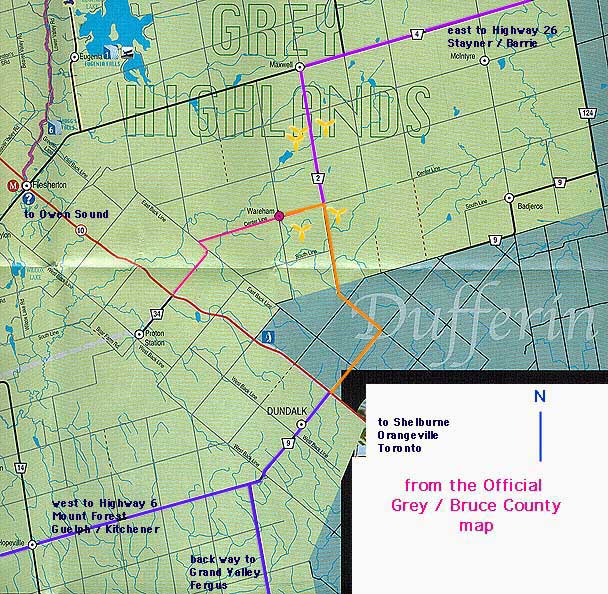Or maybe not.
Although Iron, as iron oxide minerals, is one of the most common found on the earth, as anyone actually LOOKING for the stuff knows, it is really not that easy to find as usable ore.
An added complication is that those looking for iron ores for use in direct process bloomery furnaces need to have ores in concentrations far in excess of that which modern industrial processes can utilize. Ideally, the small Early Medieval furnaces that I am interested in require iron concentrations in the order of plus 50% for effective bloom creation.
- After centuries of human activities, many of the best ancient deposits of suitable iron ores have been already used up.
- Although primary bog iron ores have a continuous deposit process, the sad truth is that the exact chain of geology and geography needed to create concentrated deposits is very specific. Even small amounts of human activities can completely disrupt this formation chain.
- In many cases the reason ores may still remain in areas once exploited in the past is simply that those individual pieces of ore are not of high enough quality to have been utilized the first time around.
Obviously my first question would be 'Is there any usable iron ore locally?'
I live close to Dundalk Ontario, abut 2 1/2 hours drive NW of Toronto. On top of what is called the 'Dundalk Plateau', an area about as flat as a pancake:
The Niagara Escarpment is recognized as one of the world's unique natural wonders. Essentially, it is a landform -- a ridge of rock several hundred metres high in some locations -- stretching 725 kilometres (450 miles) from Queenston on the Niagara River to Tobermory at the tip of the Bruce Peninsula. Today, in Ontario, the Escarpment contains more than 100 sites of geological significance including some of the best exposures of rocks and fossils of the Silurian and Ordovician Periods (405 to 500 million years old) to be found anywhere in the world.
from the Niagara Escarpment Commission web site
 |
| Range of the Escarpment - Altered from Wikipedia |
What this all means is that Wareham sits near the top edge of a gigantic, flat, thick, slab of solid limestone - a block a hundred metres thick. This was buried under plies of loose sand, clay and rock in later ages. About ten thousand years go, a wall of glaciers bulldozed off most of this loose stuff, filling in most of the cracks and pretty much scrapping the top off - leaving the landscape even flatter. There are some places around the edges that in the centuries since, rivers have washed out the loose materials, sometimes even exposing the top edges of the under laying limestone slab.
One feature of the remaining top cover over the solid stone plate is a bank of clay, roughly 10 - 30 metres thick. This is a fine red clay, those that remember 'Blue Mountain Pottery', popular in the 1960's and 70's, know the stuff. This layer effectively seals the aquifer inside the limestone from the surface collected water above.
There are no exposed rock faces close to me. There are large valleys which cut into the plate of the Escarpment, to the east and north of Wareham. There are very few places the rock of the Escarpment are actually exposed however. Those valleys have sides covered with massive piles of loose sand and gravel. (Of course the flat areas around have farm fields on them, the contours of the valleys covered with combination maple and pine forests.) Getting to those valleys is a roughly 50 km / half hour drive north, closer to 30 km / 20 minutes to the east. Spotting any place where there is exposed rock is extremely difficult.
Now, our well at Wareham is a deep one (175 feet) down through the clay layer and into the aquifer of the Escarpment limestone. There certainly is iron dissolved in that water. It cloggs our coffee makers and even settles out as a thin film of fine red iron oxide if you left a container to stand overnight. Remember however the *surface* water is sealed off, entirely separated by that thick clay cap over the limestone. (Its why you pay for a deep well to begin with, as the surface water level fluctuates hugely over the course of the seasons!) So if there is elemental iron oxide in the deep water - it is only going to come close to the surface at locations where the base limestone is exposed.
I certainly have wandered along the margins of creeks and swamps around Wareham, looking for possible primary bog iron ore deposits. A couple of places, I have spotted very marginal signs of a red iron ochre in the water. Never anything like an amount that could be collected, much less a deposit of actual bog iron itself. This is suggestive however, at least of the possibility.
There are a couple of operations in the area that dig 'peat' - which in this case is really the organic rich sediments from the bottom of the swamps. These are not true peat bogs, with their chemistry of tannic acid. As these swamps are basically water filled pits into the under laying clay, there is no ability to leach elemental iron out of the rock underneath (this even assuming there is available iron in the rock itself).
Maybe along the slopes of some of the valleys?
(stay tuned for part two..)
,





















No comments:
Post a Comment